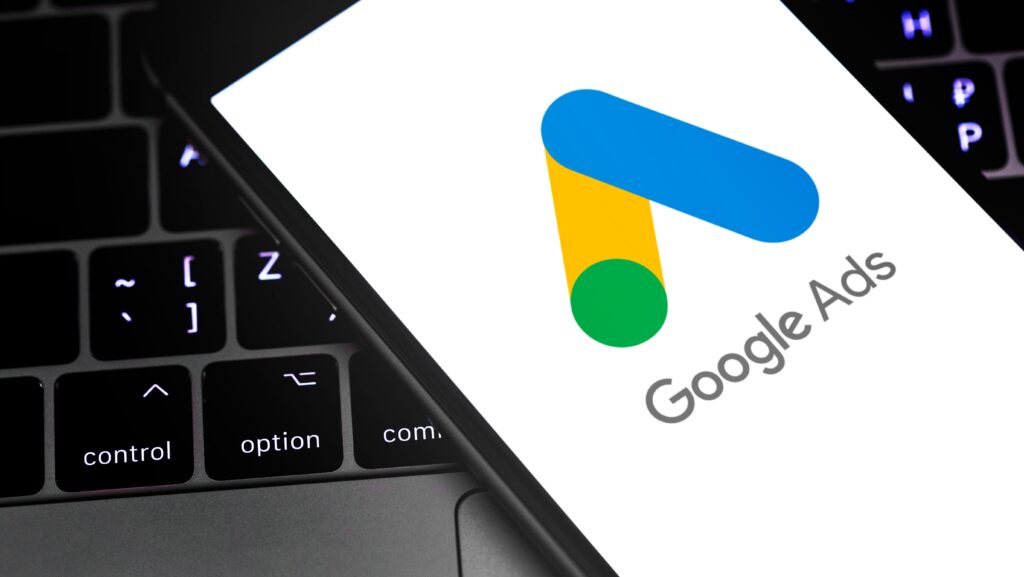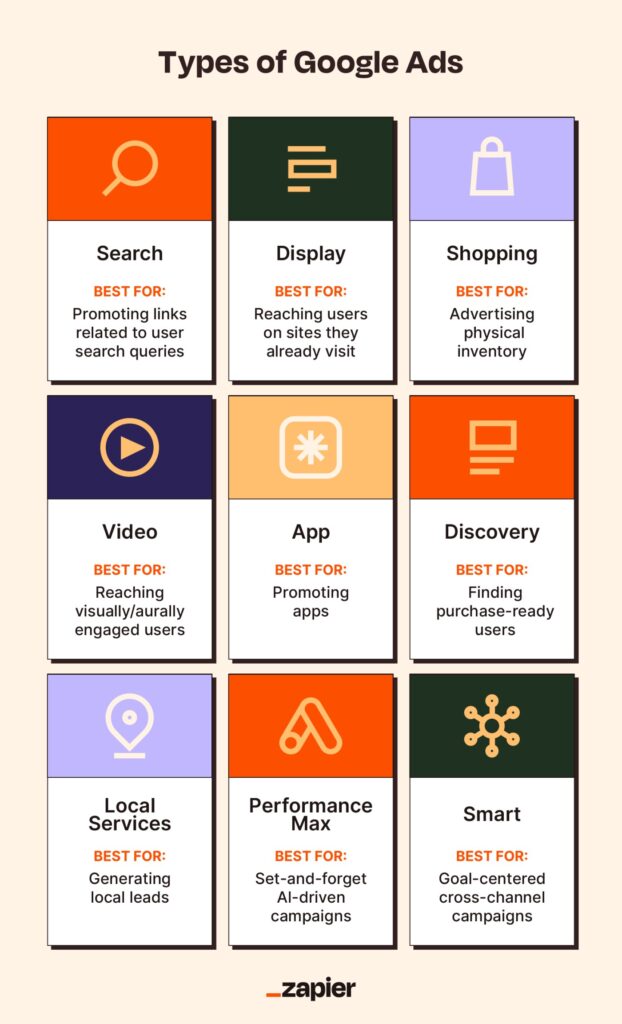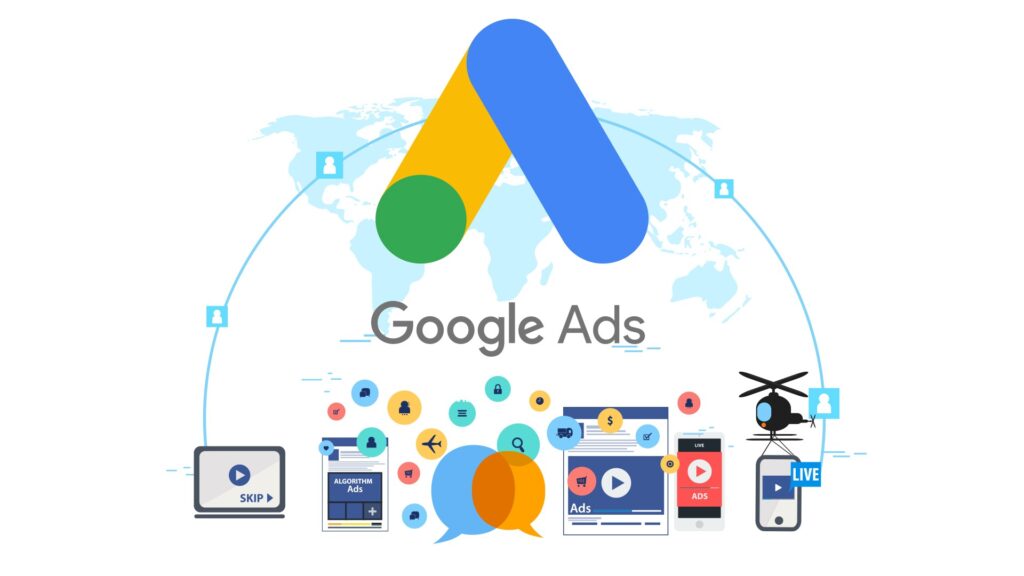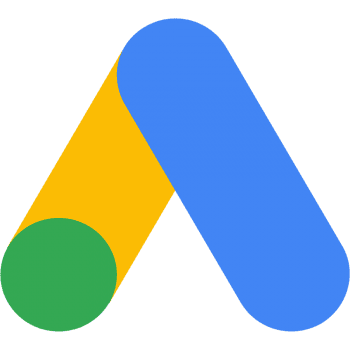Google Ads, also known as Google AdWords, is Google's online advertising platform. It enables companies to display targeted ads on the Google search engine, YouTube, Google Maps and other partner sites.
With a bidding system, advertisers can reach users who are actively searching for products or services similar to those they offer. Google Ads has become one of the benchmark platforms for online advertising campaigns, offering highly precise targeting possibilities and a measurable return on investment.

Advantages of Google Ads
Precise targeting Google Ads offers advanced targeting options, making it possible to reach specific audiences based on criteria such as geographic location, interests, online behavior and keywords. This enables advertisers to ensure that their ads reach the right people at the right time.
Measurability Every campaign is accompanied by detailed data, making it easy to analyze performance and adjust strategies in real time. This includes indicators such as click-through rate (CTR), cost per click (CPC), return on investment (ROI), and many others.
Budget flexibility Advertisers can define daily or monthly budgets to suit their means, without any long-term commitment. This flexibility means that even small businesses can test Google Ads without taking big financial risks.
Scope Extended With a presence on the world's most widely used search engine, Google Ads reaches a global audience. Ads can appear when users are actively searching for information, increasing the likelihood of conversion.
Disadvantages of Google Ads
High cost in competitive sectors In some sectors, auctions can become very expensive, which can reduce the return on investment, especially for small businesses. Highly competitive sectors such as insurance, legal or e-commerce can reach very high costs per click (CPC).
Learning curve The platform, although powerful, can seem complex to beginners. Training is needed to understand the different strategies, bids and targeting options available, in order to get the most out of campaigns. It can take time and practice to fully master Google Ads.
Continuous Management Regular monitoring is essential to optimize campaigns and avoid unnecessary expenditure. Campaigns need to be adjusted according to performance, seasonal variations, or changes in search trends, which requires ongoing involvement.
Detailed Features
Research Network Google Ads allows you to display text ads to users searching for specific keywords related to your business. These ads appear in the top results of the search engine, reaching users with strong search intent.
Display Network With the Display Network, visual ads can be shown on millions of Google partner sites, increasing brand awareness. This makes it possible to reach audiences while they're browsing the web, even when they're not actively looking for your product.
Video campaigns Google Ads lets you create video campaigns on YouTube, the world's second most-used search platform. These video ads are highly engaging and can target specific audiences, making them ideal for improving brand awareness.
Remarketing Remarketing enables you to target users who have already interacted with your site or application, encouraging them to return and convert. This feature is highly effective for improving conversions and strengthening the relationship with prospects who have shown previous interest.
Ad extensions Extensions: Extensions allow you to add additional information to your ads, such as links to specific pages, phone numbers, customer reviews or promotional offers. This helps increase the visibility and relevance of your ads.

Competitors and Alternatives
Facebook Ads Ideal for targeting based on interests and demographics, Facebook Ads offers a complementary platform to Google Ads for reaching users in their spare time.
Bing Ads As an alternative to Google Ads, Bing Ads enables advertisers to target a different, often older, audience, often with lower costs per click (CPC). Advertisers can also benefit from less competition on Bing than on Google.
LinkedIn Ads : LinkedIn Ads is perfect for B2B campaigns, allowing you to target professionals based on their industry, position and experience. This makes it an ideal alternative if your target audience is very specific to the professional world.
Rates
Google Ads works on a cost-per-click (CPC) model, where you pay every time a user clicks on your ad. Costs vary according to the competition on your chosen keywords, the quality of your ads, and your daily budget.
There is no minimum amount required, offering advertisers great flexibility. The average cost per click can vary from a few cents to several tens of dollars, depending on the sector and the competition for the targeted keywords.
My Opinion
Google Ads is a powerful tool for any business looking to increase its online visibility. Its ability to precisely target audiences and provide detailed analytical data makes it an essential choice for marketers looking to maximize their return on investment.
However, it's essential to understand how it works, and to monitor performance regularly to maximize results. For companies in highly competitive sectors, costs can be high, but by implementing an optimized strategy, the return on investment can be significant.

How to use
- Keyword search Use the keyword planning tool to identify keywords that are relevant and profitable for your business. Make sure you target keywords that match user intent to maximize conversions.
- Ad Optimization Write clear, engaging ads, highlighting user benefits and CTAs. Test different versions to determine which perform best.
- Conversion tracking Conversion tracking: Set up conversion tracking to measure the effectiveness of your campaigns and adjust your strategies accordingly. This will let you know exactly which ads and keywords are generating results.
- A/B testing Experiment with different versions of your ads, landing pages, or bidding strategies to determine what works best. A/B testing is crucial to optimizing every element of your campaigns.
- Continuing Education Take advantage of Google's free training resources, such as Google Skillshop, to keep up to date with best practices and improve your skills on the platform.
Summary
Google Ads is an essential online advertising platform for companies wishing to increase their visibility and reach potential customers in a targeted way. Although it requires careful management and in-depth understanding, its advantages in terms of reach and flexibility make it an essential tool in digital marketing.
By investing in training and adopting the right strategy, Google Ads can become a powerful lever for raising your profile and improving your sales.
Frequently asked questions
1. Is Google Ads right for small businesses?
Yes, Google Ads offers budgetary flexibility, enabling small businesses to set budgets to suit their means, while effectively reaching their target audience.
2. What is the average cost of a Google Ads campaign?
The average cost per click depends on the industry, keywords and competition. It can vary from a few cents to several tens of dollars.
3. How do I optimize my ads on Google Ads?
To optimize your ads, use relevant keywords, add ad extensions, create consistent landing pages and test different versions to see what works best.
4. What is remarketing on Google Ads?
Remarketing enables you to target users who have already visited your website or interacted with your brand, encouraging them to return and convert.
5. Is Google Ads effective for B2B?
Yes, Google Ads can be very effective for B2B, especially when combined with a specific keyword strategy and remarketing campaigns targeting decision-makers.











